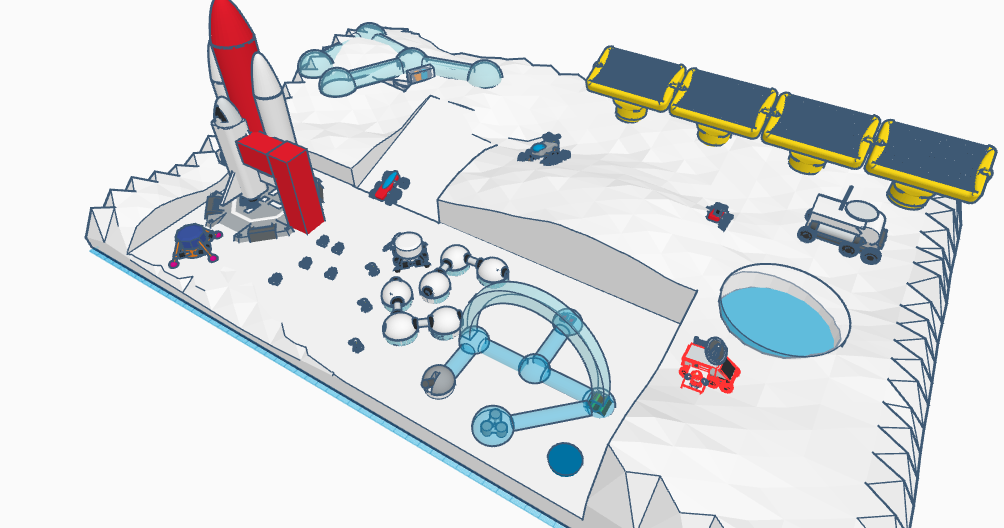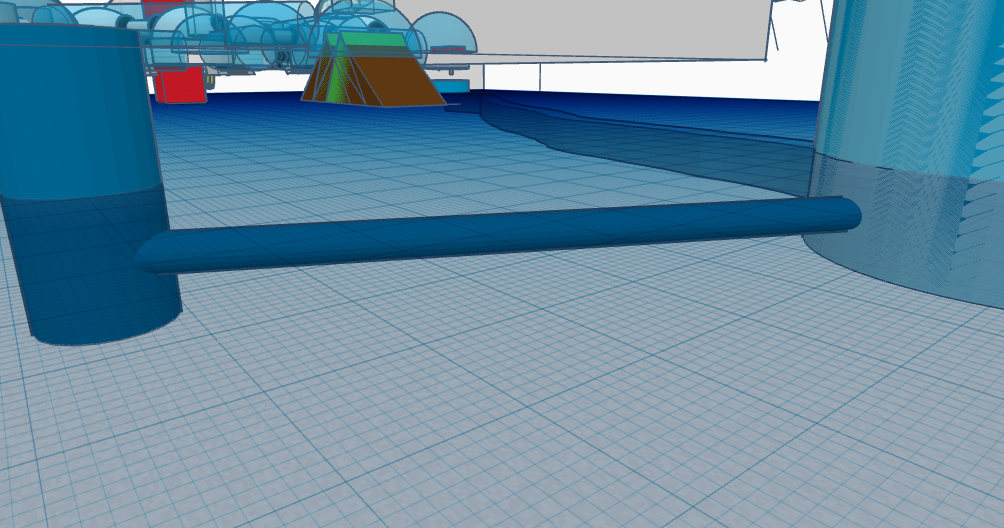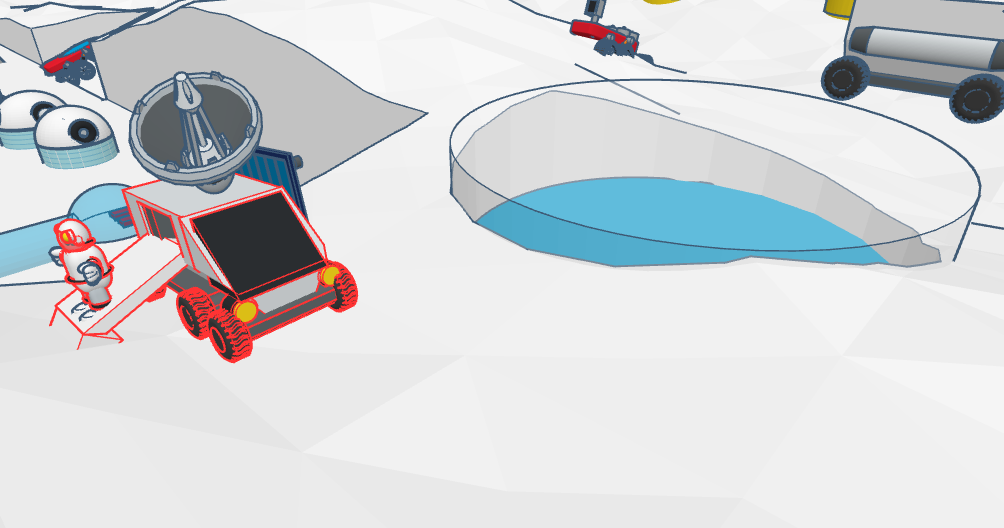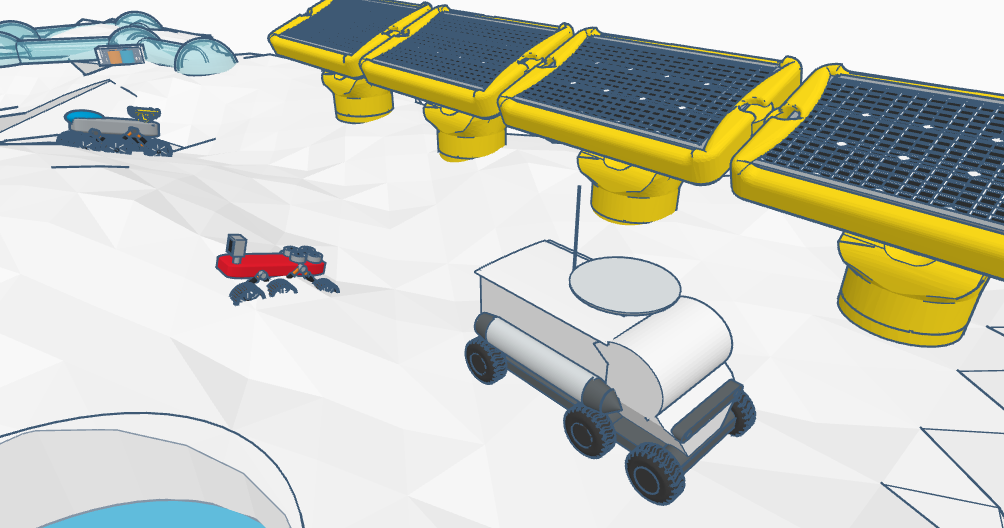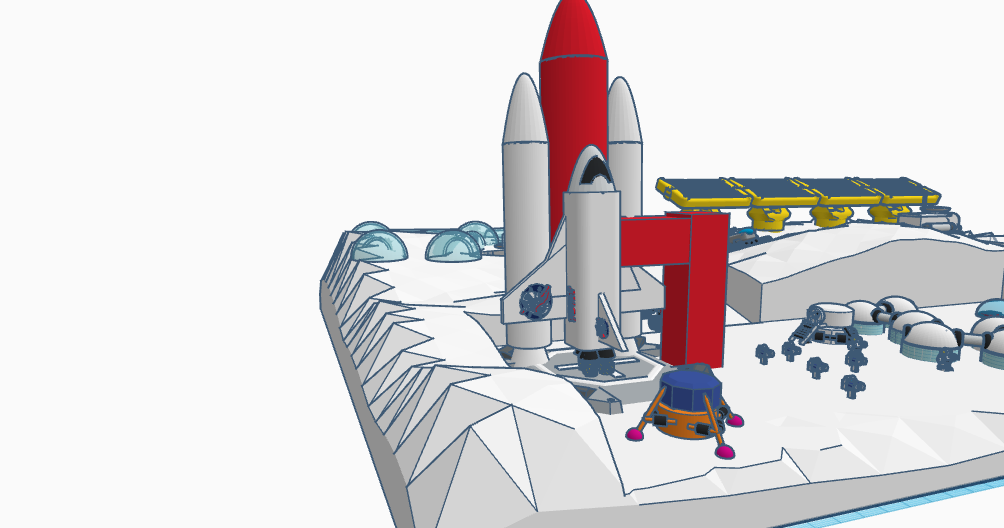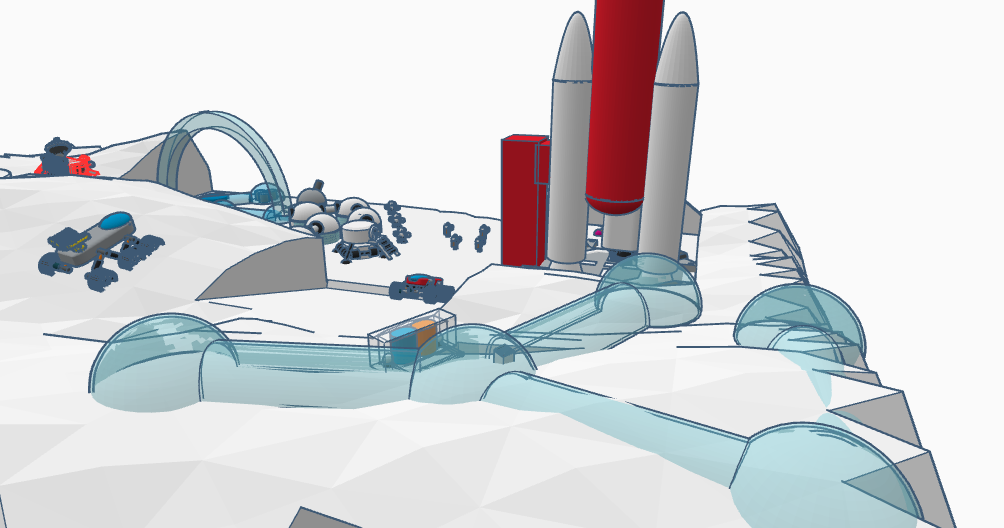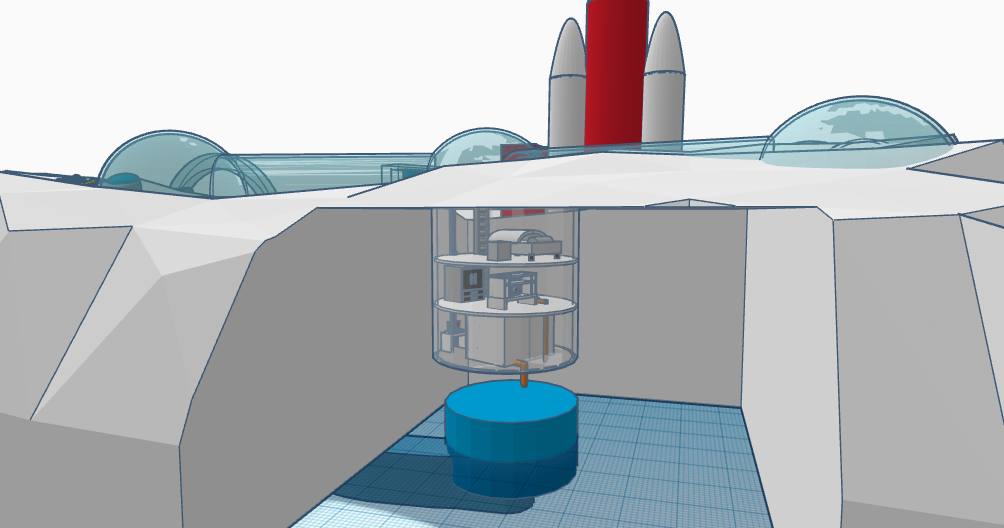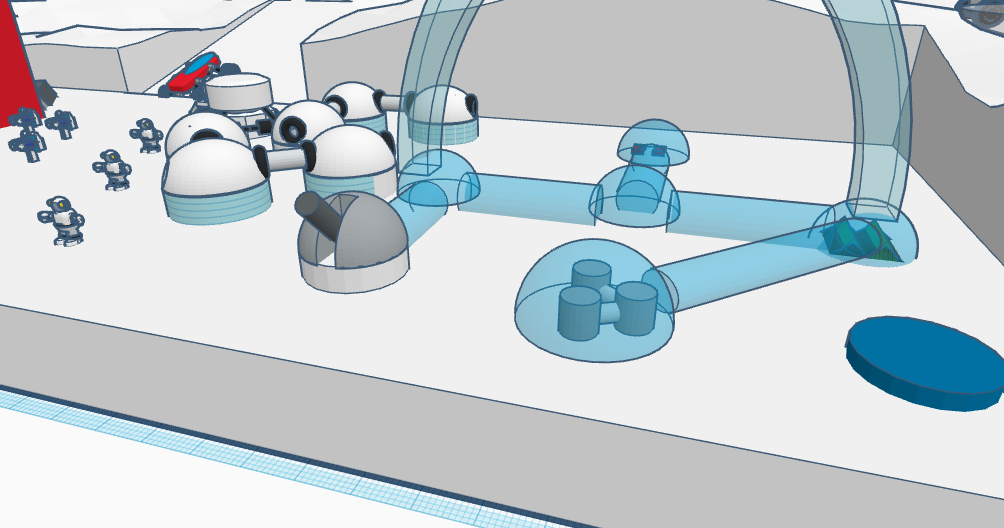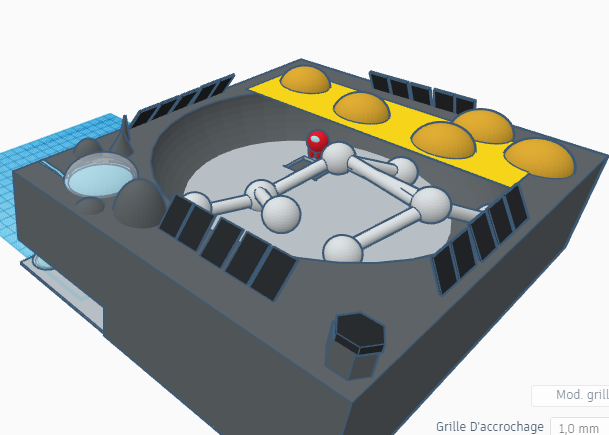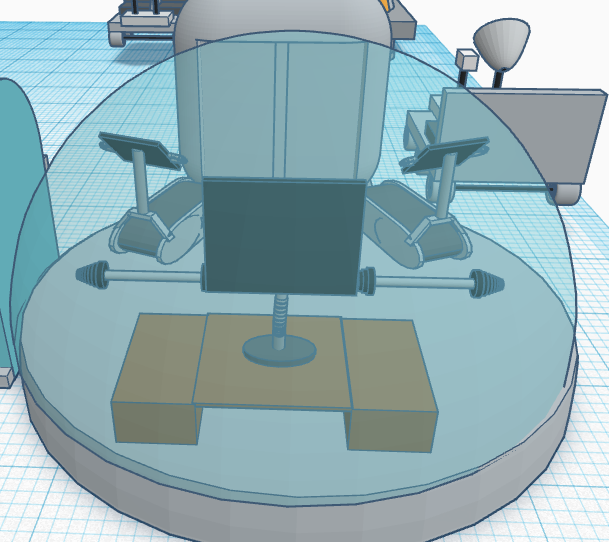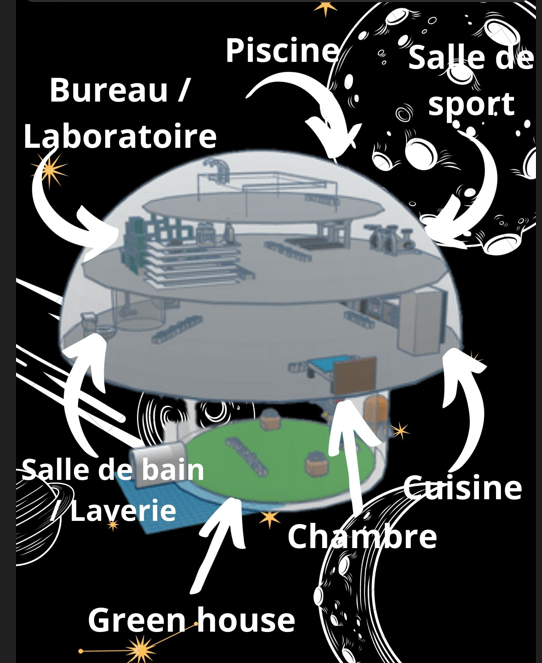Moon Camp Explorers Gallery 2021-2022
In Moon Camp Explorers each team’s mission is to 3D design a complete Moon Camp using Tinkercad. They also have to explain how they will use local resources, protect astronauts from the dangerous of space and describe the living and working facilities.
Team: MyRoboKids Team Colombia- 2022
MyRoboTech Tulua Colombia 13, 12, 14 6 / 1
External link for 3d
|
Project description
A project that brings together life and the uniqueness of the lunar environment. Located in one of the coldest areas, it protects the astronauts from the adverse with the diversity of its settlements and facilities where priority is given to a place for the rest of each astronaut because they have more than one option to choose from. Normal constructions are not our thing, and you learn that when you see gravity-defying roads in full force. Space observation sites, cargo machines and rovers everywhere are what we are composed of, as well as a rocket to return to Earth for more resources whenever the situation warrants it. Our communication with propagated waves in vehicles and camps within another camp sound like a joke, but here they are a reality. Do not be discouraged if you do not see imposing buildings or a variety of ships, we have enough and this is better than too much. The dynamism of the project makes it autonomous and capable on its own, with no half-words or explanations in between. The only resource we have in quantity is water in our two shelters, diagonal to each other; we also make use of one of the tunnels that connects the subway room with the lunar surface at the other end of the camp. There are many surprises that we keep under the ice, such as a small secret hatch for emergencies, among other things. The energy is fine and we seek above all else the well-being of the astronaut. |
||||
|
Where do you want to build your Moon Camp?
Close to the lunar poles Why did you choose this location?
We are certainly prepared for the harsh temperatures of the south pole on the Moon because it is a place where sunlight reaches, but no more than necessary. Where the largest rocks or layers of water ice are concentrated, accompanied by the best views on its visible face. This pole is also famous for its lava tunnels, crater marks and settlements of extractable resources from mining. Rather, a paradise for research and exploration by land. How do you plan to build your Mooncamp? Which materials will you use?
The variety of the material is a subject that lends itself to discussion. It could be that we have gone through everything from the hardest and most resistant to the easiest to corrode, without leaving the option of 3D printing with robotic arms, even if it still tastes too futuristic. For this reason, we do not have a strong preference for one or another resource, but we will use the one that is most beneficial to us. After all, we are not on earth, a place where we had a choice, and that carries a good life lesson in trying to do what we can with what we have |
||||
|
Water
|
Food
|
Electricity
|
Air
|
Protection
|
|
That’s right, we have two water wells and one is smaller than the other. The former is used to cover the fields where it is generally needed, and the latter contracts only the demands of the domes and surrounding areas. The way to obtain the water that goes to any of them is the one preceded by a complex process inside the loading rovers. Yes, these bring with them a heating system that heats the water ice as it traces its way to the well, where it is already in its liquid state. |
The food is grown in a dome near the rooms so that we can always be aware of its changes and whether or not it is the right time to harvest each plant germinated there. This is not all bad, because it helps us to correct our bad eating habits that we have been carrying from the earth and that we must get rid of to survive like everyone else on the moon. And it is a pity because now that we are forced by the environment to eat healthy, we will not do it with the variety we are used to. The idea is to bring different seeds. |
We seek to find the best possible energy bridge, putting in advance the solar energy that we always have to take advantage of depending on whether it is present in our place of settlement. But of course we will consider other equally viable ways. We refer to the hydraulic energy that, if we know how to manage with accuracy and responsibility the excess water in our wells and if there is any part that is not being used, it is surely what we want to implement in our system. Since what we have the most are resting places, it is not a bad idea for each room to contribute. |
Known mostly as electrolysis, this is a chemical separation of molecules by means of electricity that subjects hundreds of them and forces them to abandon their original bonds, differentiating their elements. From this transformation we manage to snatch from the water molecule the oxygen atoms we need, which will be immediately encapsulated in an attempt not to waste anything. This is how the famous oxygen capsules scattered throughout the camp are created. It has the disadvantage of being a process that requires specific conditions to be as effective as it promises, also demanding a place of operation. |
Machine-based and self-imposed protection. We have treated the terrain so well that it is in itself advantageous in the event of natural disasters caused by weather or extreme temperatures. Our roverts are able to both warn us of danger and respond to it because they are not only used to transport resources and people, they go much further. Alarm signals are emitted from the high points of the camp when the strategy fails, and if the threat is no longer avoidable or combattable, the rocket will immediately activate the dotted trajectory back to Earth. |
|
Describe a day on the Moon for one of your Moon Camp astronauts
First I get out of bed and start my day at about 7 or 8 in the morning. I have breakfast with the crops from my garden and when I finish I rest, go to the bathroom, brush and bathe thinking of talking to my relatives through optical systems as I did on Earth with the Internet. Before leaving, I put on my spacesuit, oxygen only lasts up to 10 hours, to go in search of new materials or try to make more progress in the greenhouse collection, checking if everything is in order. I also carry my jet pack in case I need to explore. I then go to my rover and then I see some meteorites very close to the launch pad which reminds me of the maintenance of the solar panels a few kilometers from there; I travel about 40 km and make several investigations and tests in some places to be able to get more information. When I’ve got evidence of everything I go to the small bunker of my rover with pieces of these meteorites that collided and their debris. I changed course straight to my lab to see what cool stuff they had inside and called some friends from the university to find out that they were made of mercury with some traces of gold. It is something incredible, we had never seen it before. After that we got hungry and went to get food, and while we were having lunch we talked about it. At the end, I went to exercise for an hour and drank some water. |
||||


